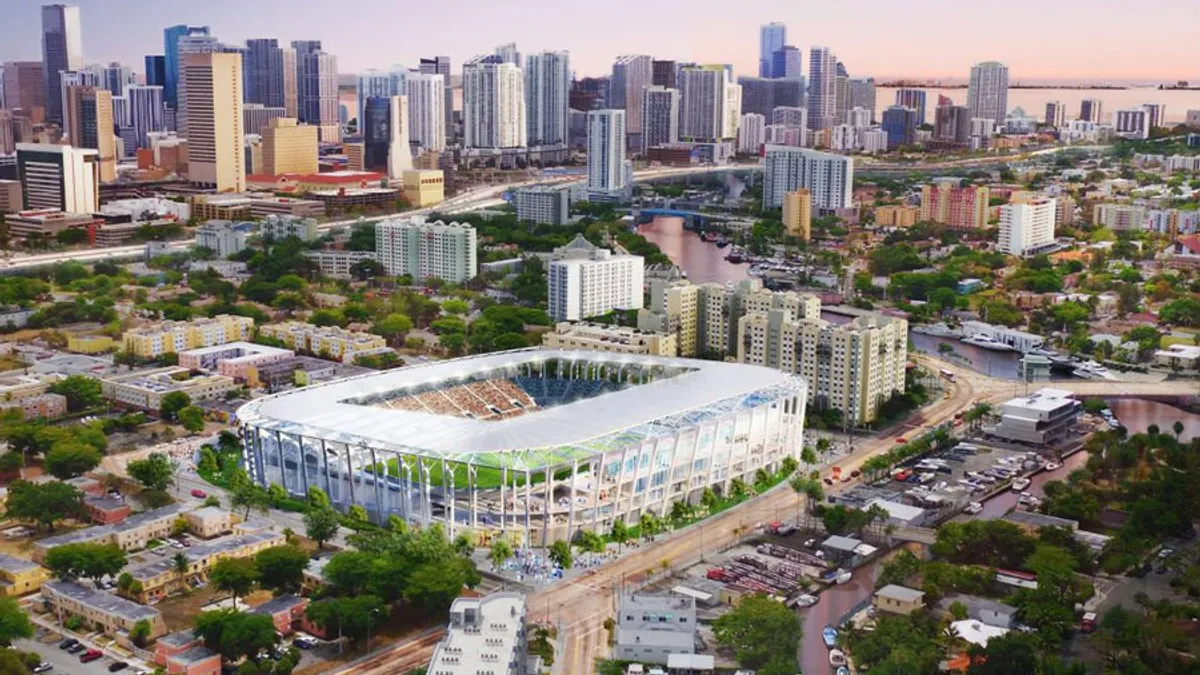Dive Brief:
- Architecture firm Populous has unveiled a new service for sports-venue clients, a design-build practice that performs renovations during off-season months in order to minimize — or eliminate — downtime for both fans and venue management.
- The design-build approach allows Populous to fast-track "short turnaround" renovations by giving customers a single point of contact from the design phase through construction. The "one-stop" service also includes a rapid pricing process so that owners know as soon as possible if they can afford to execute the renovation. Populous says the service helps clients calculate return on investment and select the right furniture, fixtures and equipment to top off their construction projects.
- Populous already has delivered the Kids' Corner playground area in Oriole Park at Camden Yards in Baltimore, Maryland, using the new design-build service, as well as the Legends Lobby at the University of Oklahoma's Barry Switzer Center. The company is currently working on building out an eSports stadium, which is scheduled for completion at the end of this year, at the Arlington Convention Center in Arlington, Texas.
Dive Insight:
The new design-build service will run parallel to Populous' thriving design services for ground-up sports venues like the soccer-specific BBVA Compass Stadium in Houston, Texas; the University of Phoenix Stadium in Glendale, Arizona; Marlins Park in Miami, Florida, and McClane Stadium at Baylor University in Waco, Texas.
Considered an alternative form of project delivery not too long ago, design-build now accounts for almost half of all nonresidential projects, according to a market study conducted by FMI. FMI found that 44% of nonresidential, road, water and wastewater projects will be delivered via design-build by 2021, representing a total project value of $1.2 trillion. Between 2018 and 2021, manufacturing (16%) and education-related (15%) construction projects are expected to demonstrate the most design-build spending.
Private owners can choose whatever delivery method they like, but some public agencies are constrained by state law. The Design-Build Institute of America maintains an up-to-date database of which states allow the design-build method for publicly funded projects, and one can see how piecemeal some of these laws are. However, the general trend over time has been to permit its use in more situations, allowing taxpayers to reap the same benefits as the private sector.
Institute CEO Lisa Washington told Construction Dive in March that one reason public agencies might not allow the design-build method of delivery is that they might have some misconceptions about how it works. For example, some incorrectly believe that the architect's role as "trusted advisor" is automatically eliminated or that big design-builders will bring in their own subcontractors and workforce, denying opportunities to local companies. Washington said, like with any other project, the owner calls the shots and can set workforce participation requirements and any other element of the project.











